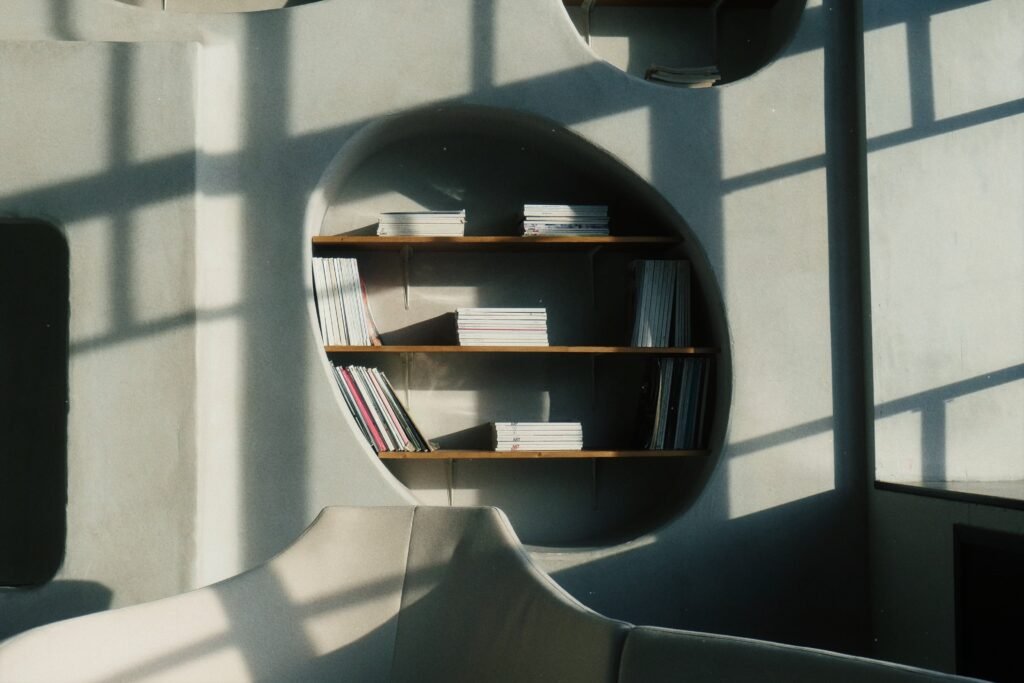When it comes to painting your bathroom, choosing the right type of paint is crucial. After all, you want a paint that can withstand the high humidity, frequent moisture, and occasional splashes that occur in this space. So, what type of paint should you use for a bathroom? In this article, we will explore the best options that will not only provide durability and longevity but also give your bathroom a fresh and inviting look. Whether you prefer a classic matte finish or a sleek glossy sheen, we have got you covered. Say goodbye to peeling and flaking paint, and hello to a bathroom that can handle any moisture challenge with grace.

Types of Paint
When it comes to choosing the right paint for your bathroom, there are several options to consider. Each type of paint has its own unique qualities and benefits, so it’s important to understand the differences between them before making your decision.
Latex Paint
Latex paint, also known as water-based paint, is one of the most popular options for bathroom walls. It is easy to clean up, dries quickly, and has low levels of volatile organic compounds (VOCs). Latex paint is also known for its durability and resistance to cracking, peeling, and fading. This makes it particularly suitable for high-moisture areas like bathrooms.
Oil-Based Paint
Oil-based paint is another option for bathroom walls. It provides a glossy finish and is highly resistant to moisture, making it suitable for bathrooms that experience high levels of humidity. However, oil-based paint has a longer drying time and a stronger odor compared to latex paint. It also requires mineral spirits for clean-up, which can be more difficult and time-consuming.
Semi-Gloss Paint
Semi-gloss paint is a popular choice for bathroom ceilings and trim. It has a subtly shiny finish that reflects light, making the bathroom feel brighter and more spacious. Semi-gloss paint is also highly resistant to moisture and can be easily wiped clean, making it a practical choice for areas that are more prone to splashes and watermarks.
Eggshell Paint
Eggshell paint is a versatile option that works well for both walls and ceilings. It has a soft, velvety finish that adds a touch of elegance to any bathroom. Eggshell paint offers good durability and can be easily cleaned, but it may not be as moisture-resistant as semi-gloss or oil-based paint.
Moisture-Resistant Paint
Moisture-resistant paint is specifically designed to withstand the high moisture levels often found in bathrooms. This type of paint contains mildewcides and fungicides that help prevent the growth of mold and mildew. Moisture-resistant paint can be found in both latex and oil-based formulations, providing a variety of options for different preferences and needs.
Factors to Consider
When choosing the right paint for your bathroom, it’s important to consider several factors that will impact the overall performance and longevity of the paint.
Moisture Levels
Bathrooms are often exposed to high levels of moisture, especially in the form of steam from showers and baths. It is crucial to choose a paint that can withstand these conditions without peeling, cracking, or developing mold and mildew.
Ventilation
Proper ventilation is essential in bathrooms to prevent excessive moisture buildup. Adequate ventilation can help minimize the risk of paint damage and mold growth. If your bathroom has poor ventilation, it may be beneficial to choose a paint that is specifically designed to be moisture-resistant.
Durability
Bathrooms are high-traffic areas that are frequently used. It’s important to choose a paint that is durable and can withstand regular cleaning and other daily activities without easily wearing or chipping.
Mold and Mildew Resistance
Mold and mildew thrive in moist environments, so it’s important to choose a paint that is resistant to these types of growth. Look for paints that contain mildewcides and fungicides to ensure long-lasting mold and mildew resistance.
Color Options
The color of the paint can greatly impact the overall look and feel of your bathroom. Consider the size and lighting of your bathroom when choosing a color. Lighter shades can make small bathrooms appear larger, while darker shades can create a more dramatic and cozy atmosphere.
Preparation
Proper preparation is essential for achieving a smooth and long-lasting paint finish in your bathroom. Here are a few preparation steps to keep in mind:
Cleaning the Surface
Before applying any paint, make sure to clean the surface thoroughly. Remove any dirt, dust, grease, or mildew using a mild detergent and water solution. This will ensure that the paint adheres properly and provides a smooth finish.
Repairing Damaged Areas
Inspect the walls and ceilings for any cracks, holes, or other damage. Repair these areas using a spackling compound or joint compound, and then sand them until they are smooth. This will ensure that your paint job looks even and professional.
Priming the Surface
Priming is an important step in preparing the surface for paint. A primer creates a smooth and even base for the paint to adhere to, improves paint adhesion, and helps to prevent stains from bleeding through. Choose a primer that is specifically designed for the type of paint you will be using, such as a latex primer for latex paint.
Application Techniques
The application technique you choose can greatly influence the final appearance of your bathroom paint job. Here are three common techniques to consider:
Brushing
Brushing is the most traditional and versatile technique for applying paint. It allows for precise control and is ideal for cutting in corners, edges, and other detailed areas. Use a high-quality brush with synthetic bristles for the best results.
Rolling
Rolling is a popular technique for covering large areas quickly and efficiently. It is best suited for walls and ceilings that have a relatively smooth texture. Use a medium-nap roller cover for most bathroom surfaces, and choose a roller frame that is compatible with the cover size.
Spraying
Spraying is a technique that is best left to experienced painters or professionals. It provides a smooth and seamless finish, but requires specialized equipment and proper ventilation. If you choose to spray your bathroom paint, make sure to carefully follow all safety instructions and protect surrounding surfaces from overspray.

Drying Time
Drying time is an important consideration when painting a bathroom, as it affects how long you need to wait before using the space again. Different types of paint have varying drying times, so it’s important to choose one that fits your needs and schedule.
Drying Time of Different Paint Types
Latex paint typically dries to the touch within one to two hours and can be recoated within four hours. It generally takes around 30 days for latex paint to fully cure and reach maximum durability.
Oil-based paint has a longer drying time, often taking anywhere from 24 to 48 hours to dry to the touch. It can take up to two weeks for oil-based paint to fully cure and harden.
Semi-gloss, eggshell, and moisture-resistant paints generally have similar drying times to their base types, whether latex or oil-based.
Before using a freshly painted bathroom, it’s important to allow sufficient drying and curing time to avoid any smudging, peeling, or damage to the paint.
Maintenance
Proper maintenance is essential for ensuring the longevity and appearance of your bathroom paint. Here are some important maintenance tips to keep in mind:
Regular Cleaning
Regular cleaning is important in keeping your bathroom paint looking fresh and vibrant. Use mild, non-abrasive cleaners and a soft cloth or sponge to clean any dirt, stains, or splashes. Avoid using abrasive cleaners or scrub brushes, as they can damage the paint finish.
Avoiding Harsh Chemicals
Harsh chemicals, such as bleach or ammonia-based cleaners, can damage the paint finish and cause it to fade or peel. Use gentle cleaning products that are specifically formulated for painted surfaces to ensure the longevity of your bathroom paint.
Repainting as Needed
Over time, your bathroom paint may begin to show signs of wear and tear. When this happens, it’s important to touch up or repaint the affected areas to maintain a fresh and clean appearance. Keep extra paint on hand for easy touch-ups when necessary.

Recommended Brands
Choosing a reputable paint brand can help ensure the quality and performance of your bathroom paint. Here are a few recommended brands known for their high-quality paints:
Sherwin-Williams
Sherwin-Williams is a well-known paint brand that offers a wide range of paint options for different needs and preferences. Their paints are known for their durability, coverage, and color selection.
Benjamin Moore
Benjamin Moore is a trusted brand that offers a variety of paint options, including a wide selection of colors and finishes. Their paints are known for their exceptional quality and durability.
Behr
Behr is a popular paint brand known for its high-quality products and affordability. They offer a range of options suitable for bathrooms, including moisture-resistant paints and vibrant color choices.
Valspar
Valspar is a reliable paint brand that offers a diverse range of paint options. Their paints are known for their durability, ease of application, and vibrant colors.
Cost Considerations
The cost of paint can vary depending on the brand, type, and quality. Here are some cost considerations to keep in mind:
Price of Different Paint Types
Latex paint is generally more affordable compared to oil-based paint. Oil-based paints tend to be more expensive due to their durability and moisture resistance.
Semi-gloss and moisture-resistant paints may also be slightly more expensive compared to standard latex paints due to their specialized properties.
Value for Money
While cost is an important consideration, it’s equally important to consider the overall value for money. Investing in high-quality paint that offers durability, moisture resistance, and easy maintenance can save you money in the long run by reducing the need for frequent repainting or touch-ups.
Conclusion
Choosing the right paint for your bathroom is crucial for creating a beautiful and functional space. Consider factors such as moisture levels, ventilation, durability, mold and mildew resistance, and color options when making your decision. Proper preparation and application techniques, as well as regular maintenance, will help ensure a long-lasting and vibrant bathroom paint job. Consider reputable brands like Sherwin-Williams, Benjamin Moore, Behr, and Valspar for quality paints that offer value for money. By taking these factors into account, you can confidently choose the perfect paint for your bathroom and enjoy a fresh and inviting space for years to come.


